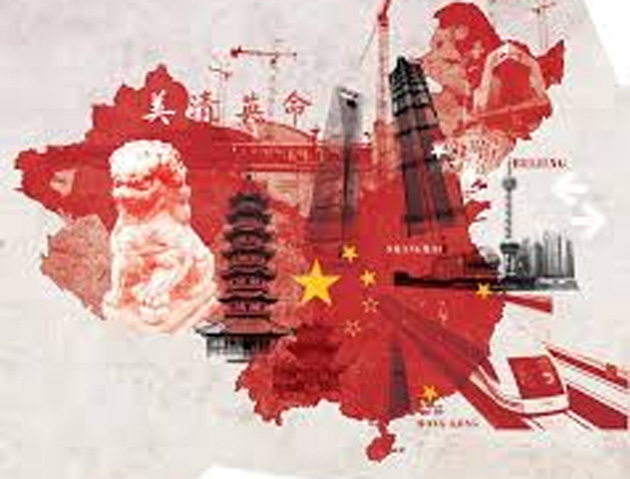The year 2018 marks the 40 anniversary of China’s reform and opening-up which prompted China to alleviate poverty and stand as the world second largest economy. Since then, 800 million people were lifted out of poverty and efforts for building a moderately prosperous society continue.
A large number of Chinese provinces are dependent on tourists, unlike to that of Afghanistan, and contribute tremendously to poverty alleviation. To preserve their culture, on the one hand, and attract tourists, on the other hand, Chinese ethnic minority groups conduct cultural festivals: Donning traditional dresses, singing the soulful songs of their ancestors in modern theaters, and dancing and playing their old musical instruments – these ancient, cultural festivals will fill one with strong nostalgic feelings and serve as appetizers for visitors/tourists.
The 56 ethnic groups, with 55 minorities, officially recognized in China, form a colorful culture and being strongly supported by the government regardless of their ethnicity or religious beliefs to participate in poverty alleviation and contribute to the country’s economy. On my five-day trip to Liupanshui city of Guizhou province, in which 45 foreign and domestic reporters and 20 students from ASEAN countries attended, I was amazed at jaw-dropping economic development and tourist destinations of Guizhou province, which used to be one of the poorest provinces of China.
The current year also marks the 40 anniversary of the establishment of Liupanshui city, located in the western Wumeng mountain area of Guizhou province. Liupanshui is dubbed as “the Cool City of China” for having average temperature. Chinese government seeks to build mountain health tourism products system and more than 10 essential tourism zones, including 6 national 4A level tourism attractions and 6 provincial tourist resorts, have been completed in Liupanshui. According to Wang Zhiqiu, director of editorial department from People’s Daily’s Guizhou Bureau,Liupanshui has undergone tremendous changes in the wake of reform and opening-up with the three most prominent ones known as “reform of resource changing into assets”, “capital changing into stocks” and “farmers changing into shareholders”.
Last year, Liupanshui received more than 30 million tourists and generated tourism revenue of over 20 billion yuan. In the first quarter of the current year, the number of tourists reached 11.09 million, an increase of 60.8 percent over the same period last year.
The continuous “blowout” growth of tourism industry has contributed to the economic and social development of the city and the added value of tourism accounted for 6.8 percent of GDP.
The airport and roads in the mountainous province of Guizhou are one of the main reasons behind its economic progress. That is to say, the Chinese believe that connectivity and opening-up will be the backbone of economic development of a country. A Chinese saying goes, “If you want to be rich, you must build roads at first.” It indicates that the transportation construction is a key condition of economic development and will promote regional economic coordinated development. If there is no connectivity or no “go global” and “bringing in”, the two principles strongly pursued by Chinese government, there will be no economic development. Since China has tasted the sweet fruit of reform and opening-up, it seeks to open wider to the outside world and extend people-to-people and state-to-state exchanges.
To view Afghanistan, it is also rich in culture but there is shortage of linking and connectivity. How many international airports does Afghanistan have? Above all, there is a wide gap between rural and urban areas.
There is great economic potential in Afghanistan such as untapped mineral resources and colorful cultural festivals but its connectivity with the outside world is extremely limited. If the government really seeks to develop the economy, it has to invest on roads, infrastructures and tourist sites. For example, building international airports in Bamyan and Badakhshan district of Wakhan, which are both secure and ancient, and many other secure cities and provinces will do tremendous contribution to the country’s economy. If people from around the world could directly travel to secure and ancient places, they would not hesitate to do so. In such a case, ethnic groups will be able to showcase their culture similar to that of China to attract tourists and contribute to the country’s economy.
Visiting the mountainous districts and areas of Guizhou, I remembered the ancient places of Afghanistan which are similar to those areas in terms of mineral resources and cultural baggage. To alleviate poverty and develop the country’s economy, Afghanistan will have to follow the developing countries, mainly China, which is ready to share the fruit of its development with developing and under-developed countries including Afghanistan.
Home » Opinion » The Fruit of China’s Economic Development
The Fruit of China’s Economic Development
| Hujjatullah Zia

